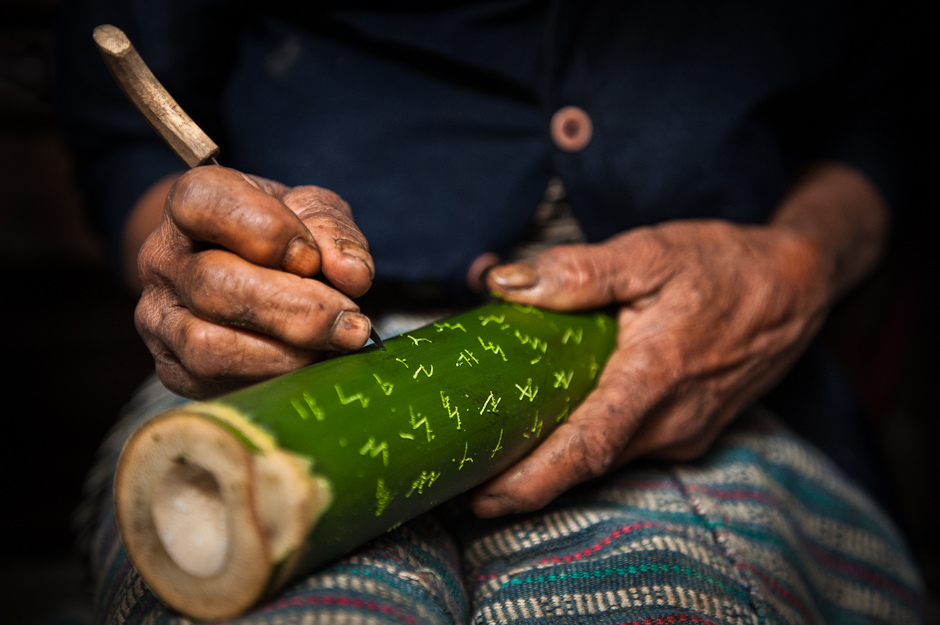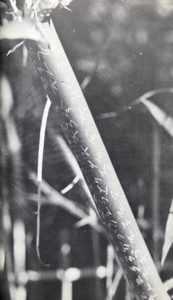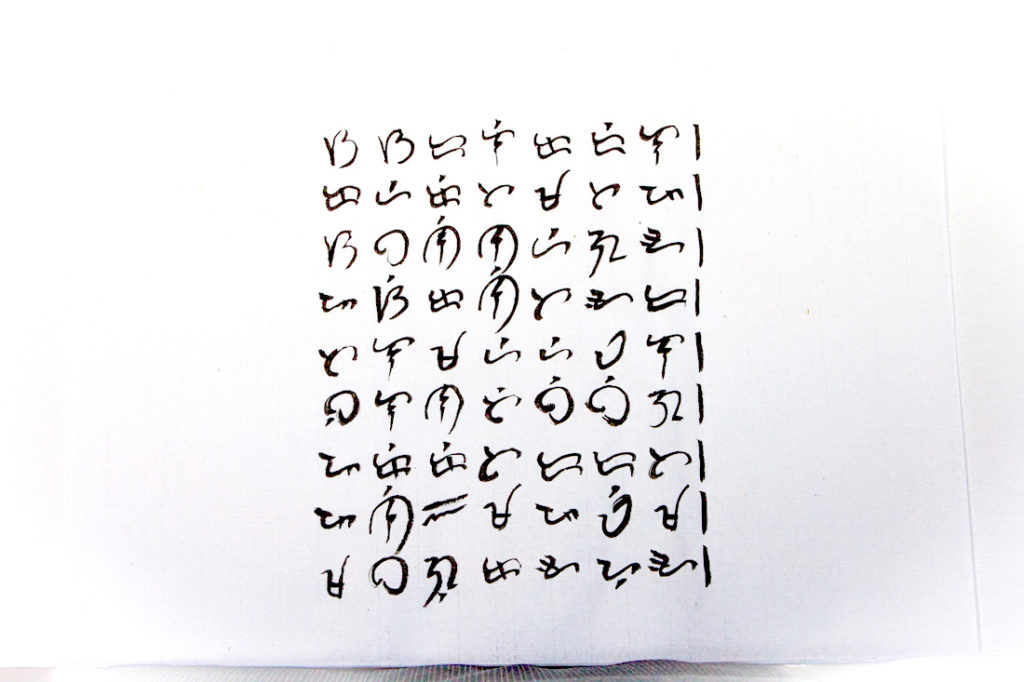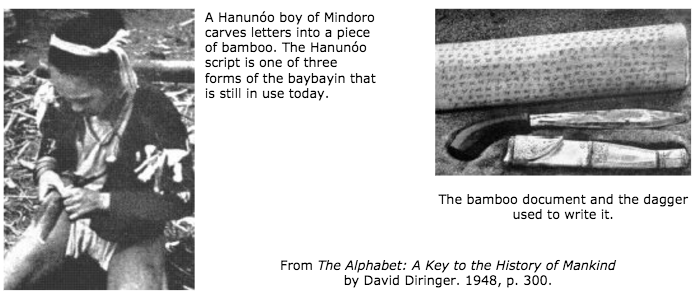Ambahan Poetry & Baybayin Calligraphy

Ambahan Poetry
During my research of Baybayin (ancient Filipino script) I ran into an ancient Filipino poetic form called the ambahan. While information is scarce on the internet on this subject matter— primary sources are even scarcer. Most of my information comes from the Mangyan Heritage Center in the Philippines and a Dutch anthropologist, Antoon Postma, who did significant research into Filipino poetry (he lived amongst and married into the Hanunoo, a Mangyan sub-tribe in the island of Mindoro in the Philippines). Antoon Postma recorded hundreds of these poems and most famously collected some of them in his book: Treasure of a Minority
The ambahan is a traditional poetic form of the Hanunoo Mangyans. Like the Filipino tanaga, each line of the ambahan contains seven syllables. Many ambahans are about nature, life and death, love and relationships. As you read them, you get a feeling of humility and beauty— haiku-like imagery, Dickinson-like simplicity.
An example from a collection by Mangyan Heritage Center in the Philippines:
| Hanunoo-Mangyan: | Tagalog: | English: |
| Ako nangos babayan Saludan bansanayan Hog banhiwan man di wan Sis gubay-gubay lingban Hog linong was baaynan |
Ako nama’y iduyan Binibining marilag Mahimbing sa kandungan Sa gilid, sa dingdingan Tahimik na tahanan |
In my hammock, rests my love My wife, my sweet, so tender Quietly we lay, side by side In this yard, a tranquil den Our home, O calming delight! |
In a literary paper by Postma, he defines the ambahan as:
- “a verse with seven-syllable lines,
- that is chanted, almost recited, with an undefined musical pitch, and without the accompaniment of musical instruments,
- has rhyming end-syllables,
- contains many words that do not occur in the spoken Hanunoo language, whereas it is generally lacking in loanwords from Spanish, Tagalog or Bisaya, and
- finally, uses a symbolic language to convey the idea expressed.”
Ambahans Are Social
Ambahans poems are expressed in two forms:
- Chanted or recited in social circles: During social gatherings (ie. festivals, burials) people would compete with each other in reciting ambahans appropriate for the occasion. People would intently listen, laugh, and cheer the informal contest of wit into the deep night.
- Inscribed on bamboo tubes or slates to be sent as letters to their recipient: A person would write the ambahan, leave it on the side of the road, and a passerby would bring it as close to the destination as possible. This would take as many people as necessary to get to the recipient. Anecdotally, they say that a village had no secrets and a lover’s love letter was an enamor already well known!
The social aspect of an ambahan is an essential characteristic. According to Postma, “the ambahan is different. It is primarily of social character. It does not stand alone, it is not for one man, but finds its true existence in the company of others. It is a social art, created by the Mangyan to enrich and enliven the community.”
Hanunoo Mangyans would memorize and create ambahans according to their own age level. Children would memorize ambahans fit for children but would use ambahans appropriate for an adult when they grew up and married. Even the elderly have ambahans to share the experiences of old age and death.


If you’d like to read more ambahans, I would follow these links!
- Selected ambahans from Antoon Postma’s Treasure of a Minority
- Collection of Ambahans from the Mangyan heritage center of the Philippines:
- Paper by Antoon Postma about ambahan poetry:
§
Baybayin Calligraphy
One of the ambahans struck me as so creative that I decided to exercise my calligraphy with it— featured below. Of note, this would traditionally be done in Hanunoo script, not Baybayin.

Ambahan number 237 from Postma’s “Treasure of a Minority”:
| Hanunoo-Mangyan: | Tagalog: | English (Antoon Postma’s translation): |
| Katpungan pagsudungan Kita una magkaban Babaw apnig bariwan Saruray no humagan Kiblagan yi kuramwan Sulbadan yi suudan Magkabta araw uman Pamidkan dimlisig wan Patlay saghaya yi man |
Sa sandaling karimlan Kahit kita magtipan Sa banig na higaan Pagsikat nitong araw Talang maghihiwalay; Buklod nati’y bibigay; Pagkikita’y daratal Paningi’y mapawi man May bagong kaanyuan. |
At this hour of the dark night we are still together now on the woven sleeping-mat. But when the sun rises soon, and the stars become detached, our bond might break up too. When we’ll ever meet again, it is not with mortal eyes, but the eye-sight of the soul. |
Translating Filipino Poetry
In addition, as part of my exercise, I took some time to dwell on the poetic language used in the ambahan. Of my readings, I came upon a Tagalog dictionary that included archaic and obsolete words that Google translate or Tagalog-Dictionary.com did not have. A few words caught my interest:
- Magtipan (ᜋᜆᜒᜉ): translates to “covenant.”
- Mapawi (ᜋᜉᜏᜒ): can mean “vanish”; in addition to “disappear, die, pass”
- Kaanyuan (ᜃᜀᜌᜓᜀ): can mean “condition of being, manner of being”; in addition to “form, structure, appearance”
One can say the last few lines are the “kireji” of the haiku, the “caesura” of western poetry, or the “volta” of the sonnet. I can’t have enough of Postma’s translation as it captures the spirit of the text: “kaanyuan” transcends from “creation” or “beginning” into what that really means in the context of love, old age, and death— the “eye-sight of the soul.”

I’ll be posting more Baybayin calligraphy as I learn more. Moreover, I am looking into ways I can incorporate medicine and health into this!
Links
- Jacob Maentz is a photographer who has fantastic photos documenting the Hanunoo people:
- Selected ambahans from Antoon Postma’s Treasure of a Minority
- Popular writing system website:
- Collection of ambahans from the Mangyan heritage center of the Philippines:
- Paper by Antoon Postma about ambahan poetry:
- See more calligraphy and art on my Instagram:

Leave a Reply to Mico Cancel reply